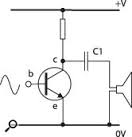Follow along with the video below to see how to install our site as a web app on your home screen.
Note: This feature may not be available in some browsers.
Can someone explain how class AB can theoretically drive infinte current into output load. How is it different from class A stage?
